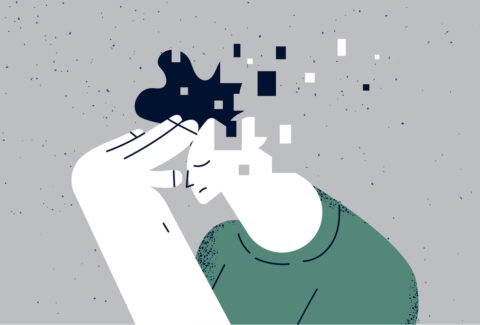Emotion-Focused Therapy: Unlocking the Power of Emotions in Healing
Emotion-Focused Therapy (EFT)[1] is a transformative, evidence-based psychotherapeutic approach that emphasizes the central role of emotions in human experience and healing. Developed by Dr. Leslie Greenberg, EFT integrates elements of humanistic, experiential, and attachment theories to foster emotional awareness, expression, and regulation, empowering individuals to create meaningful change in their lives.[2]
The Foundation of Emotion-Focused Therapy
Emotions are often viewed as barriers or sources of discomfort; however, EFT reframes emotions as adaptive signals that carry essential information about our needs and values.[3] EFT operates on the premise that emotional experiences, when properly understood and processed, can lead to profound personal growth and healing.
Key Principles of EFT
- Emotions as Adaptive Tools: Emotions are not simply reactions but critical tools for understanding our environment and driving adaptive action.
- Maladaptive Emotional Patterns: Many individuals develop maladaptive emotional responses due to unresolved trauma, negative experiences, or unmet needs. EFT aims to transform these patterns into constructive emotions.
- Experiential Focus: EFT emphasizes the in-the-moment[4] experience of emotions, encouraging clients to explore their feelings in a safe and supportive environment.
- Attachment Theory Integration: Secure attachments are fundamental to emotional well-being. EFT helps clients identify and repair attachment ruptures that underlie emotional distress.
How EFT Works: The Process of Change
EFT unfolds in three key stages, each designed to guide clients through emotional awareness, transformation, and integration:
- Emotion Awareness: Clients learn to identify and validate their emotional experiences, exploring how these emotions influence thoughts, behaviors, and relationships.
- Emotion Regulation: EFT provides tools for managing overwhelming emotions, such as grounding techniques and self-compassion exercises, fostering a sense of control and safety.
- Emotion Transformation: The heart of EFT lies in transforming maladaptive emotions into adaptive responses. For example, feelings of shame might be replaced with self-worth, or anger with a renewed sense of empowerment.
Applications of EFT
EFT is widely used in various contexts, including individual therapy, couples therapy, and trauma recovery.
- Individual Therapy: EFT helps individuals resolve internal conflicts, improve self-esteem, and process unresolved grief or trauma.
- Couples Therapy: EFT for couples focuses on strengthening emotional bonds, improving communication, and addressing attachment insecurities.[5] Research shows that EFT for couples has a success rate of up to 75% in reducing relational distress.
- Trauma Recovery: EFT offers a compassionate framework for processing trauma, helping clients transform feelings of fear, shame, or anger into self-compassion and resilience.[6]
Evidence Supporting EFT
EFT is supported by extensive research, demonstrating its effectiveness across a range of psychological concerns:
- Depression: Studies indicate that EFT significantly reduces depressive symptoms by helping clients process core emotions like sadness and hopelessness.[7]
- Anxiety: EFT helps clients confront and reframe underlying fears, leading to reduced anxiety levels and greater emotional flexibility.[8]
- Relationship Distress: EFT has been shown to enhance relationship satisfaction, strengthen attachment bonds, and promote long-lasting relational growth.[9]
The Therapist’s Role in EFT
In EFT, the therapist acts as a compassionate guide, helping clients explore their emotional world with curiosity and acceptance.[10] Key skills include:
- Empathic Attunement: The therapist deeply tunes into the client’s emotional experience, validating their feelings and fostering trust.
- Facilitating Emotional Expression: The therapist encourages clients to articulate and explore emotions they may have previously avoided.
- Guiding Transformation: Through gentle interventions, the therapist helps clients uncover the roots of maladaptive patterns and replace them with adaptive emotional responses.
Why EFT Matters
In a world where emotions are often dismissed or misunderstood, EFT offers a powerful framework for reconnecting with our emotional selves. By learning to embrace and transform our emotions, we unlock the potential for healing, growth, and deeper connections with ourselves and others.
Conclusion
Emotion-Focused Therapy is more than a therapeutic technique; it is a profound journey into the heart of human experience. By helping clients harness the power of their emotions, EFT not only alleviates psychological distress but also fosters resilience, self-awareness, and authentic living.
Whether addressing individual struggles or strengthening relationships, EFT stands as a beacon of hope for anyone seeking a more fulfilling emotional life.
Are You a Clinician Looking to Help Your Clients Master Emotional Difficulties Through EFT?
Join us for our Virtual Conference on Emotion-Focused Therapy (EFT) on Wednesday, December 13th, from 9:00 AM to 1:00 PM (EST)!
This interactive event is designed to equip clinicians with the knowledge and tools to make the learning and mastery of EFT accessible to their clients who struggle with emotional challenges.
Why Attend?
- Deepen your understanding of Emotion-Focused Therapy.
- Gain practical strategies to help clients transform emotional difficulties into personal growth.
- Earn continuing education credits while enhancing your therapeutic skills.
Details:
Date: December 13, 2024
Time: 9:00 AM – 1:00 PM EST
Format: Virtual
[1] Greenberg, Leslie S. “Emotion-focused therapy: An overview.” Turkish Psychological Counseling and Guidance Journal 4.33 (2010): 1-12.
[2] Greenberg, Leslie S. “Emotion-focused therapy: A clinical synthesis.” Focus 8.1 (2010): 32-42.
[3] Greenberg, Leslie S. Emotion-focused therapy. American Psychological Association, 2017.
[4] Muntigl, Peter, Lynda Chubak, and Lynne Angus. “Responding to in-the-moment distress in emotion-focused therapy.” Research on Language and Social Interaction 56.1 (2023): 1-21.
[5] Goldman, Rhonda N., and Leslie Greenberg. “Working with identity and self‐soothing in emotion‐focused therapy for couples.” Family Process 52.1 (2013): 62-82.
[6] Mlotek, Ashley E., and Sandra C. Paivio. “Emotion-focused therapy for complex trauma.” Person-Centered & Experiential Psychotherapies 16.3 (2017): 198-214.
[7] Greenberg, Leslie S. “Emotion-focused therapy of depression.” Person-Centered & Experiential Psychotherapies 16.2 (2017): 106-117.
[8] Timulak, Ladislav, and James McElvaney. “Emotion-focused therapy for generalized anxiety disorder: An overview of the model.” Journal of Contemporary Psychotherapy 46 (2016): 41-52.
[9] Nødtvedt, Øystein Ottesen, et al. ““You feel they have a heart and are not afraid to show it”: Exploring how clients experience the therapeutic relationship in Emotion-Focused Therapy.” Frontiers in Psychology 10 (2019): 1996.
[10] Greenberg, Leslie. “The therapeutic relationship in emotion-focused therapy.” Psychotherapy 51.3 (2014): 350.







